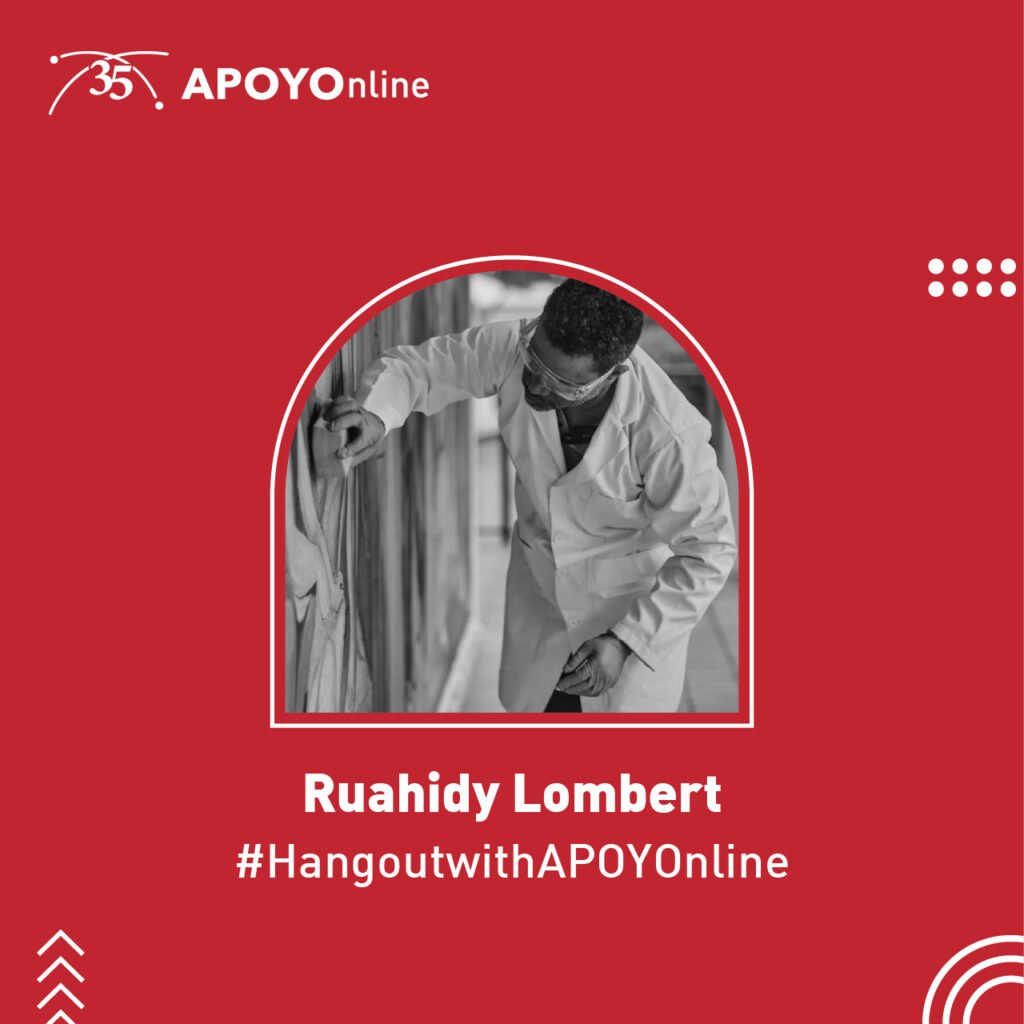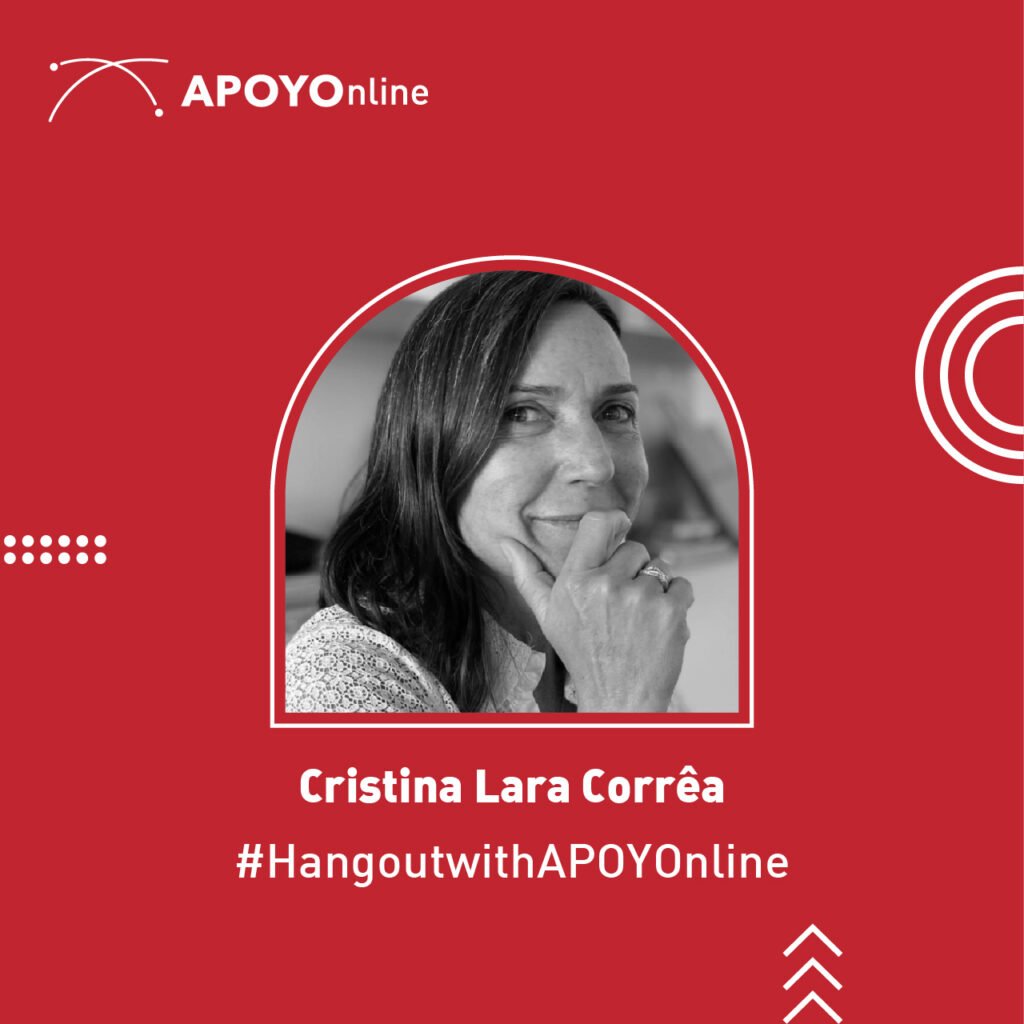
This month’s #HangoutWithAPOYOnline is with APOYOnline volunteer Ruahidy Lombert:
1) We believe that a person so consolidated and with so much knowledge in the field of preservation as you do not need presentations, but please, comment briefly about you and your trajectory from your own vision and experience:
In 2000, I began my career in the field of conservation and restoration of cultural assets. I had the privilege of training under the tutelage of the renowned conservator Hilda Abreu de Utermohlen, with whom I worked for 9 years. This period was a true school, where knowledge had no restrictions and I was able to delve deeper into various techniques and methodologies. I participated in numerous workshops taught by specialists from various areas of conservation, which allowed me to establish connections with prestigious institutions, such as APOYOnline and the AIC, of which I am today a member and have received valuable training opportunities.
Later, thanks to a scholarship from the Dominican government through the Ministry of Higher Education, Science and Technology-Mescyt, I moved to Spain to complete a master’s degree in conservation of cultural property at the Polytechnic University of Valencia. Upon returning to the Dominican Republic, I founded the Institute for Heritage Conservation and Research, a laboratory from which I have led projects of great relevance in the field of conservation. In addition, I created the Patrimonium Foundation, which has played a crucial role in the dissemination and formation of knowledge in this field. Currently, I am studying a Master’s Degree in Diagnosis of the State of Conservation of Historical Heritage at the Pablo de Olavide University (UPO), which has allowed me to delve even deeper into the science of conservation.
Parallel to my professional practice, I work as a teacher at the Autonomous University of Santo Domingo. Currently, I direct an ambitious research project in collaboration with the Ministry of Energy and Mines, the Autonomous University of Santo Domingo and the International Atomic Energy Agency. This project aims to establish the first research laboratory in the country dedicated to material cultural heritage and train professionals in various disciplines related to cultural heritage. This initiative represents a significant milestone in the consolidation of research and preservation of cultural heritage in the Dominican Republic.
2) How would you define the current moment of the Latin preservation field in a nutshell?
The field of preservation in Latin America is in a stage of consolidation and transformation. There is a growing interest in the integration of new technologies and scientific methods, such as non-destructive techniques and the use of ionizing radiation, to improve the conservation of our cultural assets. In addition, there has been a notable increase in the training of specialized professionals, with academic programs and training that are increasingly accessible and diverse. The institutions are in the process of reorganization, adopting a more collaborative and multidisciplinary approach, which strengthens work networks and facilitates the implementation of best practices in the preservation of cultural heritage. Through the opportunities offered by professional networks, many Latin Americans are not only having access to information and technology, but are also becoming part of institutions of international prestige, contributing to the development and global recognition of heritage preservation in the region.
3) What do you expect for the Latin preservation field in the next 30 years?
I hope that in the next 30 years the field of preservation in Latin America will become a global benchmark in terms of innovation and collaboration. I envision a future where advanced technologies and sustainable practices are the norm, allowing for better preservation and understanding of our cultural heritage. I hope to see an increase in international and regional cooperation, with highly trained professionals leading conservation and restoration projects globally. Furthermore, I am confident that there will be greater valorization and protection of cultural heritage by local communities, governments and international organizations, ensuring the preservation and celebration of our rich cultural heritage. The active involvement of communities in preservation processes will be key, thus strengthening our identity and legacy on the global stage and guaranteeing a sustainable future for future generations.
4) Could you indicate three publications that guided your career in the field of preservation?
Journal of the American Institute for Conservation (JAIC)- American Institute for Conservation (AIC). https://www.culturalheritage.org/publications/journal-(jaic)
Studies in Conservation-International Institute for Conservation of Historic and Artistic Works (IIC). https://www.iiconservation.org/studies-conservation
The Canadian Conservation Institute (CCI) Notes. https://www.canada.ca/en/conservation-institute/services/conservation-preservation-publications/canadian-conservation-institute-notes.html
5) What message for young people working in the field of preservation would you like to leave?
My message to young people working in the field of preservation is clear and forceful: you are the leaders and guardians of the future of our cultural heritage. Preservation is not just a profession; It is a noble and vital mission to keep our history and culture alive. Be bold and proactive in adopting new technologies and innovative methods. Your curiosity and creativity are the most powerful tools you have.
Work collaboratively, form networks and learn from different disciplines. Preservation is a field that flourishes with diversity of ideas and approaches. Their dedication and passion are essential to ensuring that our cultural heritage is not only preserved, but also celebrated and appreciated around the world.
Never underestimate the impact of your work. Every object restored, every story preserved, contributes to a richer and deeper legacy for all. Fight for sustainability and for the active participation of communities in this process. You have the power to strengthen our cultural identity and inspire future generations to continue this important work. Be leaders, innovators and visionaries in the preservation of our invaluable cultural heritage!




